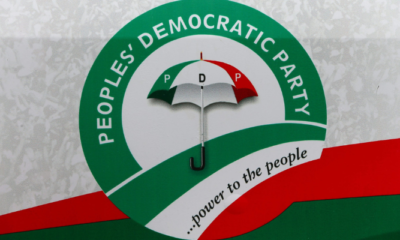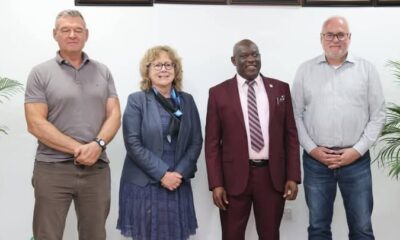Business
$1m Boom US Housing Markets
Housing markets in United States (US) neighbourhoods is booming as a million dollars could get you a lot more. During the housing boom, prices rose so high and so fast that even cookie-cutter homes in the paved suburbs of South Florida and California could cost a cool million. In Santa Clara, Calif., a high-tech hot spot, the median price hit $836,780 in 2007. That was a long way from the days when a million-dollar home evoked images of marble columns and swimming pools with vanishing edges. Subprime loans allowed more people than ever to buy houses that were once above their means. Higher demand fueled ever-higher prices until the spigot of cheap money was turned off and the housing bubble burst. The recession forced many well-heeled buyers into unemployment lines. And sales of homes over $1 million cratered by more than 50 per cent from the peak four years ago. “Everyone has less money than they once had,” said Amy Wright, an agent with The Real Estate Office in Rancho Santa Fe, Calif. “That has certainly affected the nouveau riche, and that’s definitely in that $1 million price point.” For people who do have the money, however, it’s the best time in years to buy luxury real estate. Rancho Santa Fe is a luxury enclave in San Diego County that has over the years lured the likes of Howard Hughes and Bill Gates. Equestrian trails border golf courses, and the most expensive home on the market is listed for $29.9 million. A couple of years ago, the idea of getting a house in Rancho Santa Fe for a paltry $1 million was laughable. Now, foreclosures and financially distressed homeowners account for about 15 per cent of sales, and home prices are down 30 per cent. In one golf-course community in the town, a 2,200-square-foot home is listed for $800,000. Residents live in a gated community where Spanish style homes surround a 250-acre Rees Jones-designed golf course and an accompanying 35,000-square foot clubhouse. In the 20 largest U.S. metro areas, about 2,800 homes sold for more than $1 million in July — down by more than half from July 2005, according to MDA DataQuick. Nati-onwide, overall home sales were down about 27 per cent, according to the National Association of Realtors. In the month of August, sellers with homes priced above $2 million were cutting prices by an average of 14 per cent, compared with the national average of 10 percent, according to Trulia.com. The good news for luxury homebuyers is that they’re getting about 20 per cent “more house” than they did two years ago, and the prestige of owning a $1 million home is returning, said John Brian Losh, CEO of luxuryrealestate.com. On Friday, the average interest rate for a 30-year “jumbo loan” (defined as a mortgage over $729,750) was 6.18 per cent — about a point higher than a conventional fixed-rate mortgage, according to Bankrate.com. That means the mortgage payment for a $1 million home (with a down payment of 20 per cent) would run about $4,900 a month, not including property taxes. A buyer would have to earn at least $200,000 a year to make the payment plus taxes — and only about 4 per cent of Americans fall into that tax bracket, 2007 Census data shows. In Fort Myers, Fla., Pat and Dennis Tyeryar are trying to sell their four-bedroom, 3,795-square-foot house on three acres for $999,700. The property is a rare slice of lush Old Florida, with moss cascading off shade trees and views of a river and lagoon. The property, valued at $1.4 million four years ago, is unique for the area because it sits on a peninsula: Every room in the house has a water view. In a recession-battered place like Saginaw, Mich., however, a person can scoop up almost 18 houses for $1 million. Or, a buyer can get a 6,360-square-foot, two-story brick palace that sits on a five-acre estate. The house is priced at $995,000. It has an indoor swimming pool and six bedrooms, but the property has been a hard sell in a market where a 2,300-square-foot home can go for $160,000, real estate agent Bruce Shaw said. Shaw said the home would have been listed for about $1.3 million during the boom. “It’s not like I get a lot of calls on it, not unless someone is moving from Southern California,” he said. In Toledo, Ohio, agent Nancy Kabat has two listings that add up to $1 million — a six-bedroom, $635,000 house in suburban Ottawa Hills, and a three-story, two-bedroom condo on the Maumee River for $360,000. The house has detailed crown molding and a renovated kitchen with granite countertops. It’s also near good schools. The condo has a view of Toledo’s landmark Anthony Wayne Bridge and is a short ride to an area with upscale restaurants and a vibrant nightlife. “You could have a house in the suburbs for the winter and have a condo on the river in the summer and use your boat,” Kabat said.
Business
NCDMB, Dangote Refinery Unveil JTC On Deepening Local Content
Business
Food Security: NDDC Pays Counterpart Fund For LIFE-ND Project
Business
Replace Nipa Palms With Mangroove In Ogoni, Group Urges FG, HYPREP
-
Sports5 days ago
Oyibu predicts success for Team Nigeria at Athletics Championships
-
News4 days ago
Presidency Faults US Visa Restrictions On Nigerians, Demands Fair Treatment
-

 Politics4 days ago
Politics4 days agoPDP Still Formidable Ahead 2027 – Nat’l Youth Leader
-
Rivers4 days ago
VALVA Restates Commitment Education Advancement, Literacy In Nigeria
-
Politics4 days ago
Civic Duty, Not Politics Necessitated My Engagement With Abacha – Obi
-

 Niger Delta4 days ago
Niger Delta4 days agoCancer Risk: HYPREP, IARC Launch Human Biometric Study in Ogoniland
-
Women5 days ago
What To Know About Fufu, Loi Loi
-
Sports4 days ago
Former Champion Seeks Title Defence At Para Table Tennis Tourney

